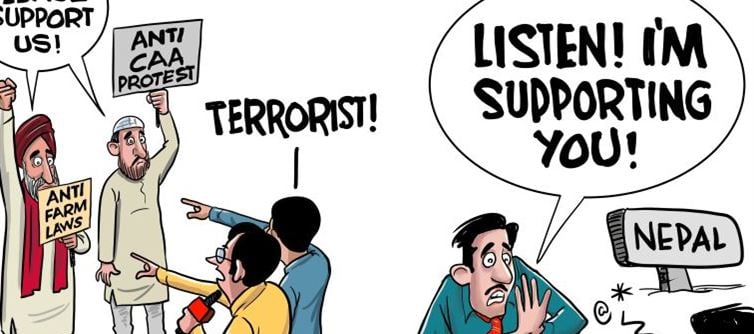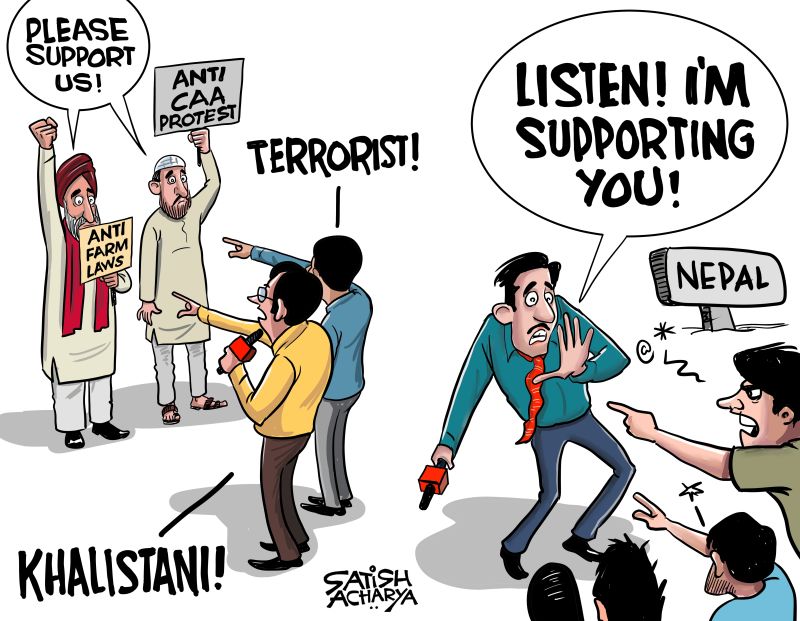
In the vibrant democracy of india, protests are not new. From the 1974 bihar Movement to the 2011 Anna Hazare anti-corruption wave, street demonstrations have always been the voice of dissent. But in today’s hyper-polarized environment, the story has changed.
The cartoon by Satish acharya captures this transformation vividly. On one side, a farmer holding a placard against the Farm Laws (repealed in 2021 after a 378-day protest by over 500,000 farmers) and another citizen opposing the CAA (Citizenship Amendment Act) plead, “Please support us!”. Instead of solidarity, fingers point at them with accusations: “Khalistani!” and “Terrorist!”.
On the other side, Nepal—a neighboring country with historical, cultural, and economic ties—offers support. But even that gesture is received with suspicion and hostility, as a group shouts him down while he protests, “Listen! I’m supporting you!”.
This irony reflects two disturbing trends:
Delegitimizing Dissent:
During the farmers’ protest, government representatives and sections of media branded protesters as “Khalistanis.”
During anti-CAA movements, ordinary citizens—many of them students and women—were labeled “terrorists” or “anti-nationals.”
According to a 2022 Pew Research report, 67% of indians believe dissent is often misrepresented as disloyalty.
Hostility Towards Solidarity:
Nepal, a country with which india shares an 1,770 km open border, has often been supportive of indian democratic movements. But in this cartoon, even external support is viewed with suspicion, reflecting a larger insecurity in accepting global criticism.
Media Trial and Social Perception:
The shouting figures in the cartoon symbolize how mainstream discourse—both media and political rhetoric—frames dissent. Instead of dialogue, labels dominate.

Studies show that over 80% of primetime tv debates in india (2019–2023) around protests focused more on political allegiances and “foreign hand” theories than the actual issues raised.
The Numbers Behind the Protest Narrative:
500+ farmers died during the Farm Laws protest (2020–2021).
1,000+ arrests were made during anti-CAA demonstrations across india in 2019–2020.
73% of youth (aged 18–25), according to an Indian youth survey 2023, say they fear being branded “anti-national” if they join a protest.
The cartoon is not just satire—it is a mirror. It shows how protest movements in india, once celebrated as the conscience of democracy, are now reduced to labels, accusations, and distrust. The tragedy is that genuine issues—farmer debt, discriminatory policies, citizenship anxieties—get buried under the noise of nationalism versus anti-nationalism.
In the end, the real question this cartoon asks is simple: When every voice of dissent is silenced with a label, who is left to speak truth to power?




 click and follow Indiaherald WhatsApp channel
click and follow Indiaherald WhatsApp channel